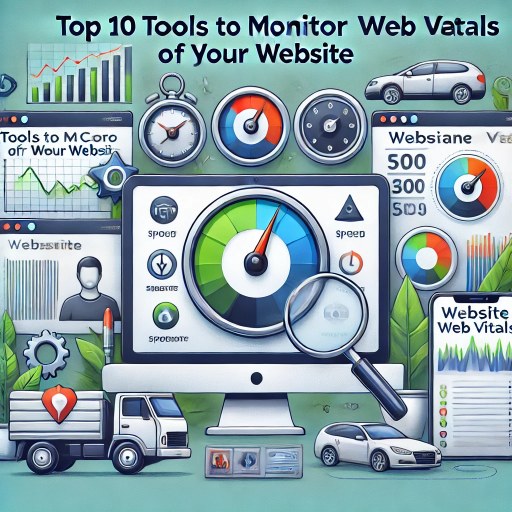Bug tracking systems are essential for modern software development. They help teams record, manage, and resolve issues efficiently while maintaining high quality across projects. Integrating robust bug tracking with other performance measures—like load testing and API monitoring—can greatly enhance your development workflow.
Comparative Summary of Bug Tracking Tools
| Tool | Best For | Key Features | Use Case |
|---|---|---|---|
| Jira | Comprehensive issue tracking & project management | Customizable workflows, extensive reporting, rich integration ecosystem | Large-scale development and agile projects |
| Bugzilla | Open-source bug tracking | Advanced search, email notifications, detailed reporting | Organizations seeking a cost-effective solution |
| Redmine | Flexible project management and bug tracking | Gantt charts, time tracking, wiki integration, issue tracking | Small to medium teams needing an all-in-one tool |
| MantisBT | Lightweight bug tracking | Simple interface, customizable workflows, email alerts | Teams with basic bug tracking requirements |
| YouTrack | Agile bug tracking and issue management | Query-based search, agile boards, customizable workflows | Agile teams seeking intuitive and fast tracking |
Top 5 Bug Tracking Tools
1. Jira
Category: Comprehensive Issue Tracking and Project Management
Is Your Infrastructure Ready for Global Traffic Spikes?
Unexpected load surges can disrupt your services. With LoadFocus’s cutting-edge Load Testing solutions, simulate real-world traffic from multiple global locations in a single test. Our advanced engine dynamically upscales and downscales virtual users in real time, delivering comprehensive reports that empower you to identify and resolve performance bottlenecks before they affect your users.
Overview:
Jira is a market leader in issue tracking and project management. It offers extensive customization, a robust plugin ecosystem, and deep integration with other development tools.
Key Features:
- Customizable workflows and dashboards
- Advanced reporting and analytics
- Integration with continuous integration and development tools
Pros:
Think your website can handle a traffic spike?
Fair enough, but why leave it to chance? Uncover your website’s true limits with LoadFocus’s cloud-based Load Testing for Web Apps, Websites, and APIs. Avoid the risk of costly downtimes and missed opportunities—find out before your users do!
- Highly configurable and scalable for enterprises
- Strong community support and regular updates
Cons:
- Steeper learning curve for beginners
- Can be complex for smaller teams
Use Case:
Best suited for large development teams and enterprise-level projects that require comprehensive issue tracking.
2. Bugzilla
Category: Open-Source Bug Tracking
Overview:
Bugzilla is a powerful open-source solution used by many organizations worldwide. Its robust features have stood the test of time for teams that prefer customizable, free tools.
LoadFocus is an all-in-one Cloud Testing Platform for Websites and APIs for Load Testing, Apache JMeter Load Testing, Page Speed Monitoring and API Monitoring!
Key Features:
- Advanced search and filtering options
- Email notifications and automated updates
- Detailed reporting capabilities
Pros:
- Completely free and open-source
- Highly customizable with a strong community
Cons:
- The interface can seem outdated
- Requires technical expertise for optimal setup
Use Case:
Suitable for organizations looking for a cost-effective and customizable bug tracking solution.
3. Redmine
Category: Flexible Project Management and Bug Tracking
Overview:
Redmine is an open-source tool that provides both project management and bug tracking functionalities. Its versatility makes it a popular choice among smaller teams.
Key Features:
- Integrated Gantt charts and calendars
- Multi-project support with time tracking
- Wiki and forum integration
Pros:
- Open-source and free to use
- Highly flexible and extendable
Cons:
- Requires configuration to tailor to specific needs
- User interface may need customization for optimal use
Use Case:
Ideal for small to medium-sized teams needing an all-in-one project management and bug tracking tool.
4. MantisBT
Category: Lightweight Bug Tracking
Overview:
MantisBT is known for its simplicity and ease of use. It offers essential bug tracking features without the complexity of some larger systems.
Key Features:
- Simple, intuitive interface
- Customizable issue workflows and notifications
- Email alerts and easy reporting
Pros:
- Quick setup and minimal maintenance
- Ideal for smaller projects with straightforward bug tracking needs
Cons:
- Lacks some advanced features found in more comprehensive tools
Use Case:
Perfect for small teams or projects that require a straightforward and lightweight bug tracking system.
5. YouTrack
Category: Agile Bug Tracking and Issue Management
Overview:
Developed by JetBrains, YouTrack is designed with agile teams in mind. It emphasizes speed and flexibility in managing issues and tracking bugs.
Key Features:
- Powerful query-based issue search
- Agile boards and time tracking
- Customizable workflows and reporting
Pros:
- Fast and intuitive interface tailored for agile methodologies
- Great integration with other JetBrains tools
- Supports custom queries for streamlined tracking
Cons:
- May have fewer integrations compared to more established tools like Jira
Use Case:
Best suited for agile teams looking for a modern, flexible approach to bug tracking.
Recent Trends and Stats in Bug Tracking
Recent studies indicate that over 70% of development teams use automated bug tracking systems to accelerate their issue resolution process. Additionally, market research projects an annual growth rate of 8-10% in the global bug tracking software market, driven by the increasing adoption of agile methodologies and the need for efficient development pipelines. Integrating additional performance tools such as page speed monitoring and free load test further supports a proactive approach to quality assurance.
FAQs
What is a bug tracking system?
A bug tracking system is a software tool that records, monitors, and manages bugs or issues in a software project. It centralizes the reporting process, enabling teams to prioritize and address problems efficiently.
Which tool is best for bug tracking?
The best tool depends on your team’s needs. For comprehensive issue management, Jira is a top contender, while open-source solutions like Bugzilla and Redmine offer robust functionality for teams on a budget.
Is Jira a bug tracking tool?
Yes, Jira is widely used as a bug tracking tool. It provides extensive features for managing, tracking, and resolving issues, making it a popular choice among software development teams.
What is another word for bug tracking?
Another term for bug tracking is “issue tracking,” which encompasses managing bugs, feature requests, and other types of issues within a project.
How to create a bug tracker?
Creating a bug tracker involves defining your workflow, setting up a system to record and prioritize issues, and integrating the tracker with your development tools. You can use dedicated tools like Jira or Bugzilla, or even build a custom solution tailored to your team’s needs.
What is the use of a bug tracking system?
A bug tracking system helps streamline the process of identifying, recording, and resolving software defects. It improves communication among team members, aids in prioritizing fixes, and ultimately enhances the overall quality and stability of your software.
Conclusion
Integrating an effective bug tracking system is crucial for maintaining high software quality and ensuring a smooth development process. Whether you choose a comprehensive tool like Jira or opt for an open-source solution like Bugzilla or Redmine, the right bug tracker will improve team productivity and project outcomes. Additionally, complementing your bug tracking with performance tools such as load testing and website speed test can further optimize your development workflow.



![9 Best IT Incident Management Software [2025] 9 Best IT Incident Management Software [2025]](https://loadfocus.com/blog/wp-content/uploads/sites/5/2024/08/it-management-tools.jpg)

